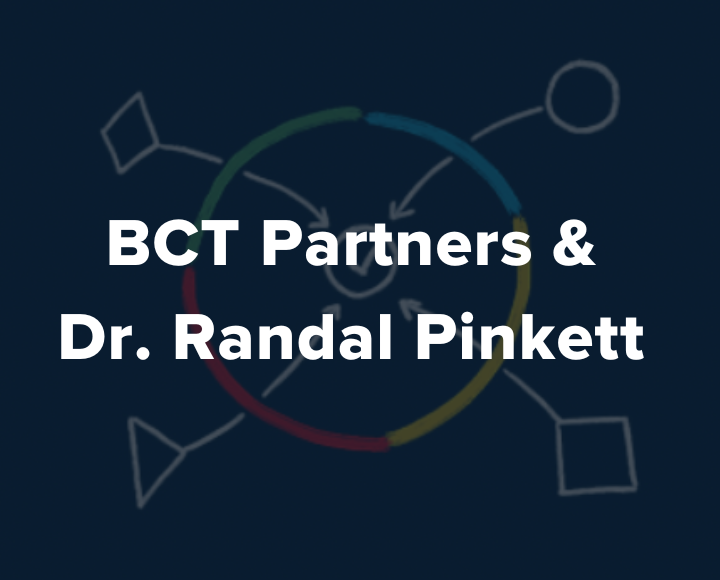Executive Summary
I find the Whole Brain® Model to be so intuitive and HBDI® to have very high face validity and reliability. In my work, I have applied these tools to help individuals embark upon their own personal DEI journey and exploration of their thinking preferences and how those preferences might create blind spots as it relates to others,” Pinkett says. “Whole Brain® Thinking effectively opens the door to conversations about communication, team building, how they relate to people, and how they can expand their leadership repertoire.
When people think about diversity, equity, and inclusion (DEI) initiatives, they often default to identifier characteristics such as race and gender. Cognitive diversity is rarely top of mind. But Dr. Randal Pinkett has found cognitive diversity to be a powerful way to help people get comfortable with DEI discussions in the workplace.
Pinkett is the co-founder, chairman, CEO, and managing partner of BCT Partners and a leading voice in the DEI space. He has over 30 years of experience helping executives build DR. RANDAL PINKETT HBDI® PREFERENCE CODE: and implement DEI initiatives in their organizations.
After learning about the Whole Brain® Thinking framework, Pinkett began using it to introduce DEI to organizations. In his recent book, Data-Driven DEI: The Tools and Metrics You Need to Measure, Analyze, and Improve Diversity, Equity, and Inclusion, Pinkett shares how Whole Brain® Thinking is a complement to deploying data-driven DEI strategies.
Objectives
“It’s so intuitively easy to understand when you think about how your brain operates and how to map that to one’s preferences and how the quadrants produce these insights,” he says. “But then the complexity can go as deep as you want. You can get into a range of topics that include organizing a meeting agenda, building trust, creating psychological safety, managing diverse teams, and being an inclusive leader.”
Dr. Randal Pinkett is the co-founder, chairman, CEO, and managing partner of BCT Partners. BCT Partners is dedicated to helping organizations and their leaders build organizational capacity, strengthen communities, and improve the quality of life.
BCT Partners’ mission is to harness the power of diversity, insights, and innovation to transform lives, accelerate equity, and create lasting change.
The simultaneous simplicity and complexity of the Whole Brain® Thinking framework were attractive to Pinkett.
Challenges
“With our clients, I have found the Whole Brain® Thinking framework, cognitive diversity, and diversity of thought to be excellent entry points to having a discussion around diversity, equity, and inclusion because it’s not what people expect,” Pinkett says.
Organizations can struggle to confront difficult questions about DEI. Their employees remain uncomfortable or uncertain even when they’re ready to have the conversation.
“People can tend to get very defensive and fearful when you talk about race and gender and ethnicity and age and the like,” Pinkett says. To get started on the DEI work Pinkett excels at, the client must feel safe having honest, candid conversations. Pinkett needed to overcome that tension to deliver successful engagements.
“When you come into the conversation talking about cognitive diversity and thinking preferences, they’re like, ‘What? You’re not talking about race or gender?’ No, we’re not.”
Solutions
“We have seen measurable improvements with our clients on indicators of whether people feel included, feel a part of the team, feel as if they belong, feel as if their differences are honored and respected, feel as if their voice is heard as a result of people better understanding them through the use of Whole Brain® Thinking,” Pinkett says.\
Having taken the Herrmann Brain Dominance Instrument (HBDI®) and seeing the results within the BCT Partners team, Pinkett recognizes the value. Before moving forward with clients, Pinkett delivers the HBDI® assessment and helps them explore Whole Brain® Thinking.
The clients identify their thinking preferences and cognitive diversity, which creates a smoother path to DEI conversations.
“You can often disarm people who may be fearful or may be jaded or simply opposed to talking about race and ethnicity and gender and all the other traditional entry points for having the conversation about DEI,” Pinkett says.
BCT Partners regularly administers assessments of culture and climate for their clients. Questions include “Do I feel like I’m included?,” “Do I feel like I belong in this organization?,” and “Is this an organization that honors identity or respects my differences?” Introducing the Whole Brain® Thinking framework supports a more harmonious working culture that helps people better understand where they are regarding thinking preferences and where their colleagues are. When people work with others who have a better understanding of them, there’s a stronger sense of being valued and having purpose for working at the organization.
On the website for Data-Driven DEI™, Pinkett shares several case studies, including the example of Altera (now a part of Intel), which lacked diversity and wanted to overhaul its recruiting and hiring processes. Specifically, the organization wanted to raise bias awareness and educate leaders and managers throughout an organization.
By having leaders take the HBDI® and embrace Whole Brain® Thinking, BCT Partners helped Altera “challenge conventional norms about ‘What are the right kinds of candidates for their pipeline?’” and create a more inclusive company culture.
“The organizations I’ve seen do extraordinarily well on matters relating to DEI are those where I see authentic leaders who are not just doing it to check a box but rather fully embracing a lifelong journey because they’ve done the introspection and self-reflection to clarify why it matters to them personally,” Pinkett says. “And because it matters to them, they are willing to be the change they want to see within the organization. “They are willing to lean into their own discomfort. They are willing to have difficult conversations.
They are willing to ask questions that Whole Brain® Thinking can help answer, such as, ‘What are my thinking preferences? Where do I find myself when it relates to cognitive diversity?’” Pinkett continues. “They are willing to learn more about where they are on their DEI journey so they can chart a course for where they want to go on their DEI journey.”
Results
“Whole Brain® Thinking and Whole Brain® Language became a part of their common language. So, the colors and the preferences became a part of the organization’s culture. Their sales team saw an increase in new hires with improved retention rates and a decrease in terminations,” Pinkett says.
“I have found that any organization can benefit from a data-driven approach to DEI and that Whole Brain® Thinking can be an essential tool to get the data to then make data-driven decisions about what to do,” Pinkett says.
Whole Brain® Thinking has become a staple of BCT’s work. The firm recognizes how Herrmann’s approach helps organizations think more deeply about every aspect of their culture, and they seek to highlight success stories that embrace Data-Driven DEI™ by leveraging Whole Brain® Thinking and HBDI®.
For example, Altera wanted to expand diversity in hiring. Whole Brain® Thinking helped the company successfully reimagine its recruiting pipeline in terms of candidate qualifications, mindset, and behaviors.
“And, above all, they were able to effectively deploy a more data-driven, innovative suite of DEI strategies for optimizing talent, understanding diverse preferences, and getting an ROI: return on intelligence.”
BCT Partners has seen results across industries, including private sector corporations, institutions of higher education, and even professional sports teams. What do they have in common? They all benefit from having “a deeper understanding of themselves and a deeper understanding of those that they work with,” Pinkett says.
“We’ve seen Altera leverage this approach in the technology industry. We’ve seen the Cleveland Cavaliers leverage this approach in the professional sports industry. “We’ve seen Cinnaire leverage this approach in community and economic development; University of California Davis in higher education; Bristol Myers Squibb in life sciences; Virtual Health, Cincinnati Children’s Hospital, and MetroHealth System in healthcare; and beyond,” he continues. “I haven’t seen an industry that could not benefit from a data-driven approach to DEI and embracing Whole Brain® Thinking.”
Whole Brain® Thinking is “a wonderful model for really understanding the underlying preferences that people have cognitively, including how they think, what they pay attention to, and how they interact with the world,” Pinkett says. “This can all be translated into a deeper understanding of themselves and a deeper understanding of those that they work with, which ultimately leads to an entire organization where people have a deeper understanding of one another.” “Whole Brain® Thinking gets to the core of how our brains function,” Pinkett adds. “And understanding our cognitive preferences can be a wonderful beginning and stepping stone to how we can better understand ourselves and better relate to one another to foster diversity, equity, and inclusion in a global context.









